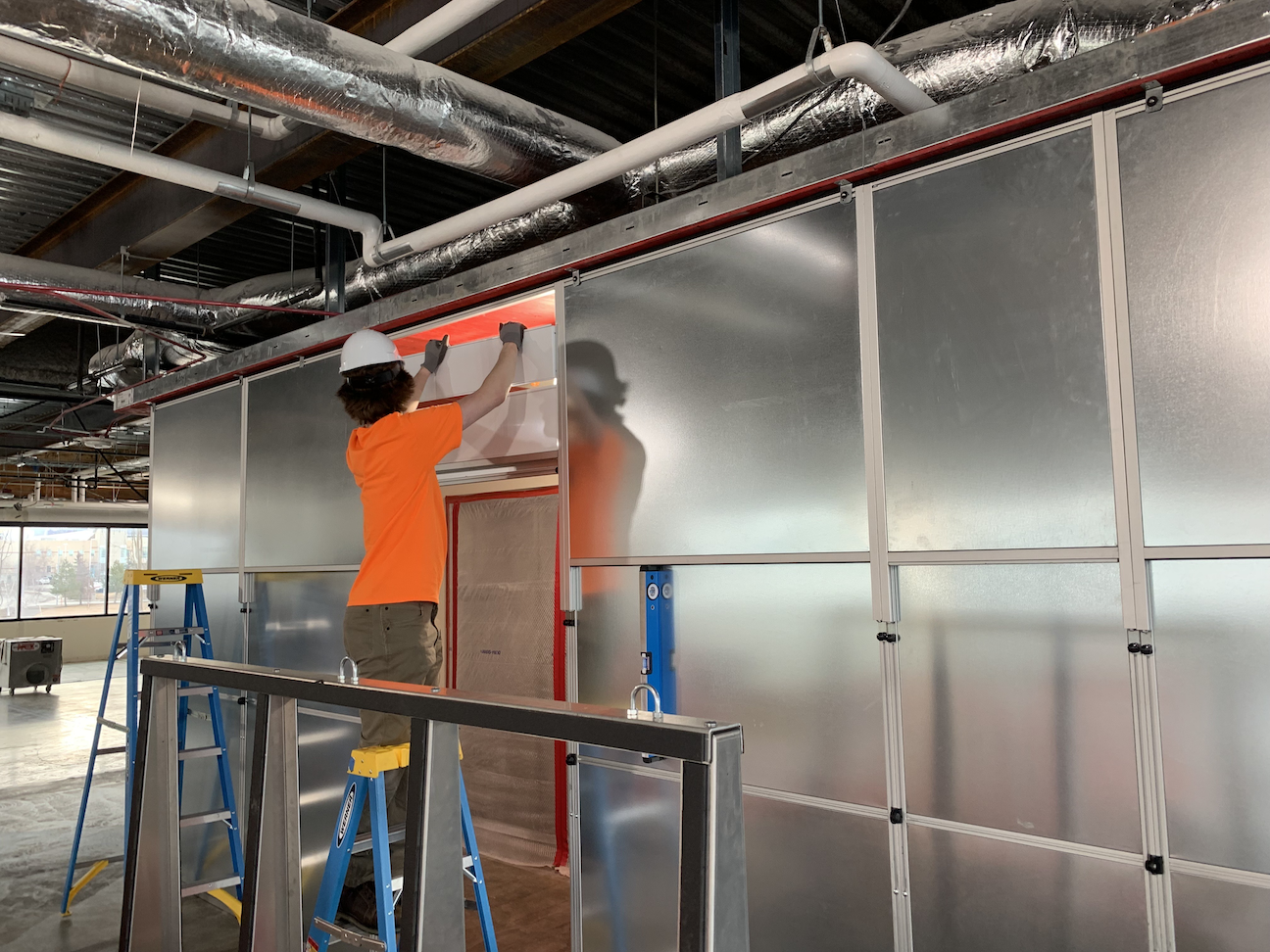According to the Centers for Disease Control and Prevention (CDC), more than 4.6 million school-age children suffer from asthma. Many of these children will return to schools under construction or renovation this fall.
Reducing the impact of construction dust is critical to the health, safety, and success of kids nationwide. Temporary Wall Systems (TWS) has solutions for keeping dust out of classrooms, supporting uninterrupted learning, and better air quality for students and staff alike.
What are the dangers of dust in the classroom?
Excessive or prolonged exposure to dust can worsen asthma, irritate the skin and eyes, lead to respiratory problems, and trigger allergic reactions. These conditions lead to more absences, trouble focusing, and poorer learning outcomes.
The United States Environmental Protection Agency (EPA) notes that construction is a primary cause of increased indoor air pollutants in schools. The EPA also acknowledges that there is no federal standard for ventilation in non-industrial settings. Schools must therefore adhere to any standards set forth by state and local governments.


Best methods for keeping dust out of classrooms
Schools and universities increasingly choose modular and portable classrooms to reduce work zone hazards. Here are the two most popular solutions for keeping dust out of classrooms during renovation.
Portable buildings
According to the National Center for Education Statistics (NCES), approximately one-third of public schools use portable buildings. Portable buildings are nonpermanent structures (such as a trailer).
These on-site outbuildings can serve many purposes – office space, classrooms, laboratories, libraries, break rooms, and more. They’re also cost-effective as they can be used, repurposed, and reused for years.
Constructing a new building on the grounds would typically take months. With portable buildings, schools can make additional space in a matter of weeks.
For some, that may not be fast enough. There are also concerns about keeping students in less secure spaces on school grounds. Modular walls can be a better solution in these cases.
Modular walls
Modular wall systems are temporary walls that can be assembled in custom dimensions to fit any space. They create a solid barrier between students and dust. Plus, a thick foam core dampens construction noise for sustained academic focus.
Temporary walls can also be fitted with HEPA filters to improve air quality. Additional accessories such as doors, keypads, and windows let schools design and install a complete, finished room in a fraction of the time a portable building takes.
Providers such as TWS offer turnkey service that makes modular walls even more convenient. We install modular walls configured to your specifications in a matter of hours. You can contain and conceal the work zone or build a temporary conference room, laboratory, or classroom.
Students and staff can remain in secured buildings blocked off from the dangers of renovation. Learn more about the benefits of temporary walls in schools and universities.
More tips to improve air quality in the classroom
When construction is complete, here are some practices that can help everyone breathe easier in class.
- Incorporate fresh air when possible. Opening doors and windows can dilute the concentration of viruses and other irritating particles in the air.
- Clean textiles regularly. Carpets, rugs, and furniture in areas where many young people congregate need regular steam cleaning in addition to vacuuming.
- Add an air purifier. If a school’s HVAC system doesn’t offer purification, a plug-in purifier can help clean the air.


Create a cleaner, quieter learning environment with TWS
The only reliable way to keep construction dust out of classrooms is to build a barrier between kids and the work zone. TWS does just that with flexible, reliable modular walls that take little time to deploy.
Plus, schools don’t have to worry about labor or large investments. Our convenient rental model and installation/removal service make the process hands-off and hassle-free.
Don’t forget to ask about adding your school logo or mascot to modular walls when you request a free estimate.



